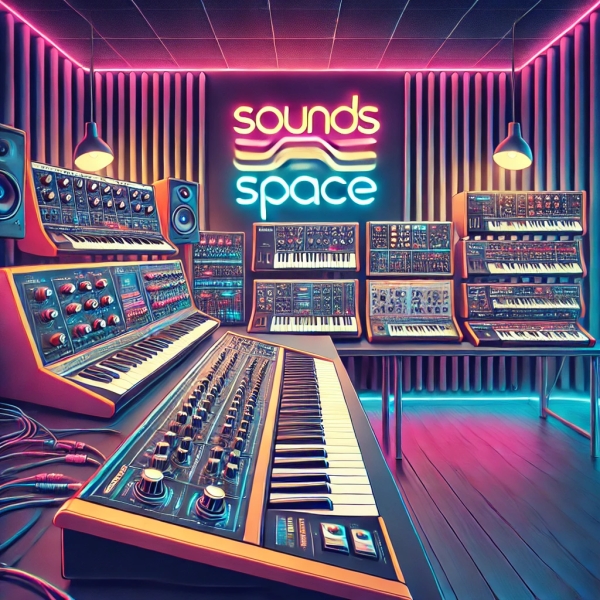The 80s Synthesizers: Shaping Modern Music
The 1980s was a defining decade for music, a period of electrifying innovation and experimentation that left an indelible mark on modern soundscapes. Central to this revolution were synthesizers, the cutting-edge instruments that empowered musicians to push boundaries and craft entirely new genres. Synthesizers became not just tools but cultural icons, bridging the gap between technology and artistry. This blog explores the significance and legacy of some of the most influential synthesizers of the 1980s.
The Rise of Synthesizers
While synthesizers existed before the 1980s, the decade marked their evolution from niche tools to mainstream instruments. Advances in microprocessor technology made synthesizers more affordable and portable, bringing them into studios and stages worldwide. By the mid-80s, synths weren’t just embellishments—they were the backbone of countless hits, revolutionizing genres like pop, new wave, and electronic dance music.
Yamaha DX7: Redefining Pop Music
The Yamaha DX7, launched in 1983, is perhaps the most iconic synthesizer of the era. Its groundbreaking use of FM (frequency modulation) synthesis enabled it to produce a vast palette of sounds, from shimmering electric pianos to punchy basslines. Unlike its analog predecessors, the DX7’s digital synthesis offered unprecedented clarity and precision. This versatility made it a favorite among artists like Whitney Houston, Michael Jackson, and Prince.
Beyond its sound, the DX7’s affordability and reliability played a pivotal role in its widespread adoption. It brought high-quality synthesis to a broader audience, democratizing music production and setting the stage for future innovation.
Roland Jupiter-8: The Power of Analog
While the DX7 showcased the promise of digital synthesis, the Roland Jupiter-8 embodied the richness of analog sound. Released in 1981, the Jupiter-8 was renowned for its lush, warm tones and versatile layering capabilities. It became a cornerstone for synth-pop bands like Duran Duran and Depeche Mode, as well as for progressive artists exploring cinematic and ambient music.
The Jupiter-8’s eight-voice polyphony and dual oscillator architecture allowed musicians to create expansive and dynamic arrangements. Its signature sound continues to inspire modern producers, cementing its status as a timeless classic.
Roland TR-808: A Rhythm Revolution
Though technically a drum machine, the Roland TR-808 deserves a mention for its profound impact on 80s music and beyond. Introduced in 1980, the 808’s analog drum sounds—from its booming bass kicks to snappy snare hits—became the heartbeat of genres like hip-hop, electro, and house music.
Initially dismissed for its “unrealistic” drum tones, the 808 found its champions in pioneering artists who appreciated its unique character. Tracks like Marvin Gaye’s “Sexual Healing” and Afrika Bambaataa’s “Planet Rock” showcase the 808’s transformative power, which remains influential in modern music production.
Sequential Circuits Prophet-5: Polyphonic Brilliance
The Prophet-5, developed by Sequential Circuits in the late 1970s but popularized in the 80s, was a game-changer for polyphonic synthesis. Its ability to store patches—a novel feature at the time—allowed musicians to recall complex sound designs instantly, making it a favorite for studio and live performances.
From Phil Collins’ atmospheric hits to the lush textures of Genesis and Peter Gabriel, the Prophet-5 was integral to the sonic identity of the era. Its warm analog tones and innovative design have kept it relevant, with modern reissues paying homage to its legacy.
![]()
The Impact on Modern Music
The synthesizers of the 1980s laid the foundation for contemporary music production. They introduced concepts like MIDI (Musical Instrument Digital Interface), enabling seamless communication between instruments and computers. This innovation not only enhanced live performances but also revolutionized studio workflows, paving the way for the digital audio workstations (DAWs) we use today.
Moreover, the sounds and aesthetics of 80s synths have seen a resurgence in recent years. Genres like synthwave and retro-pop celebrate their nostalgic charm, while mainstream artists incorporate vintage synth tones into their tracks. From The Weeknd’s chart-topping hits to film scores like "Stranger Things," the 80s’ sonic fingerprint is unmistakable.
Conclusion
The synthesizers of the 1980s were more than instruments; they were catalysts for a cultural and technological revolution in music. Tools like the Yamaha DX7, Roland Jupiter-8, and Sequential Circuits Prophet-5 not only defined the sound of a generation but also inspired countless innovations that shape music today. As we continue to explore new frontiers in sound design, the legacy of these iconic synths reminds us of the transformative power of creativity and technology working in harmony.


